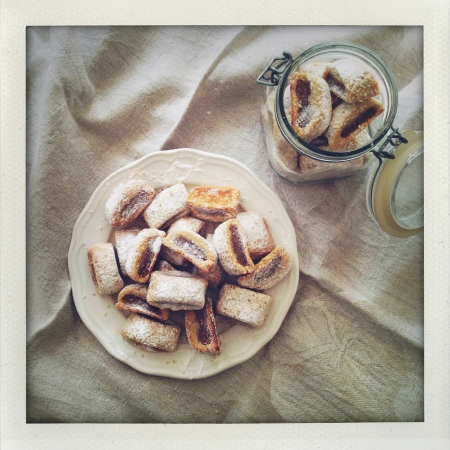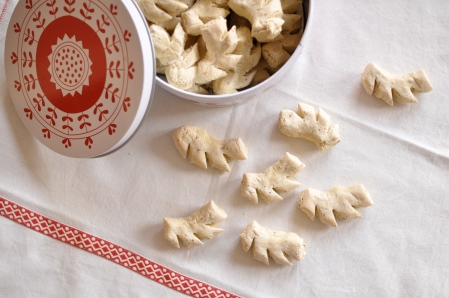I have three most vivid food memories of Jerusalem, which I visited nearly twenty years ago: yemeni malawach, a thick deliciously greasy flaky pancake served hot with raw crushed tomatoes and za’atar; addictive sachlab, a thick drink so unctuous and sickly sweet that it at once repels and keeps you coming back for more; and the date cookies from Damascus gate.
It was the spring of 1997 and I spent a few weeks in Israel visiting a friend — not ‘a’ friend, my oldest childhood friend, my next door neighbor for years, my daily play companion. She was studying in Jerusalem, so, apart from a few days around Purim during which we traveled together to the Sinai, and a few days when I ventured North alone, I spent most of those three weeks in Jerusalem, wandering. I paced the old city endlessly. Memories fade but snapshots remains. I remember the stones, the steps, the incline, the precarious wiring, the satellite dishes. I took the back way, I met mostly children. I was often halfway lost. Inevitably, the streets washed me toward Damascus gate, the buoyant pulse of Old Jerusalem.
There, a few paces removed from the falafel stands, standing alone, a little closer to the gate, was a cart piled high with date cookies.
I think I bought just one or two at first, to try. I came home with a very large bag. And although Tamara didn’t care for them, a few days later I was back for more. And then again to take some back to Berlin. This was nearly twenty years ago.
Here in London the other day a friend mentioned date bars. Then promptly — as she is wont to do — forwarded the recipe link. These are not the date cookies of Damascus gate, but, in a Proustian twist, they have transported me back to a forgotten moment, a faraway place, a cherished time, a magical trip.
Dan Lepard’s date bars share the Jerusalem cookies’ best qualities. They are subtle and layered, the understated flavors develop slowly and get under your palate. I cannot stop eating them.
Dan Lepard’s date bars (Click on the link for the recipe)
NOTE: I made just two slight adjustments:
I used only 15ml each of rose water and orange-blossom water because the ones I have are quite potent and I did not want the perfume to be overpowering. I would suggest tasting the dough and adjusting the amount accordingly.
Also, I cut the bars into 2cm (1-inch) pieces as I preferred a cookie feel rather than the larger bars.








